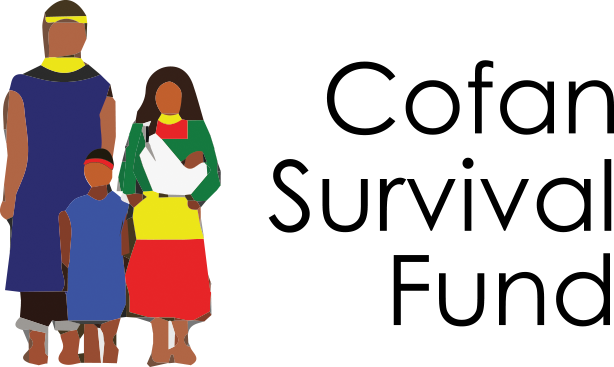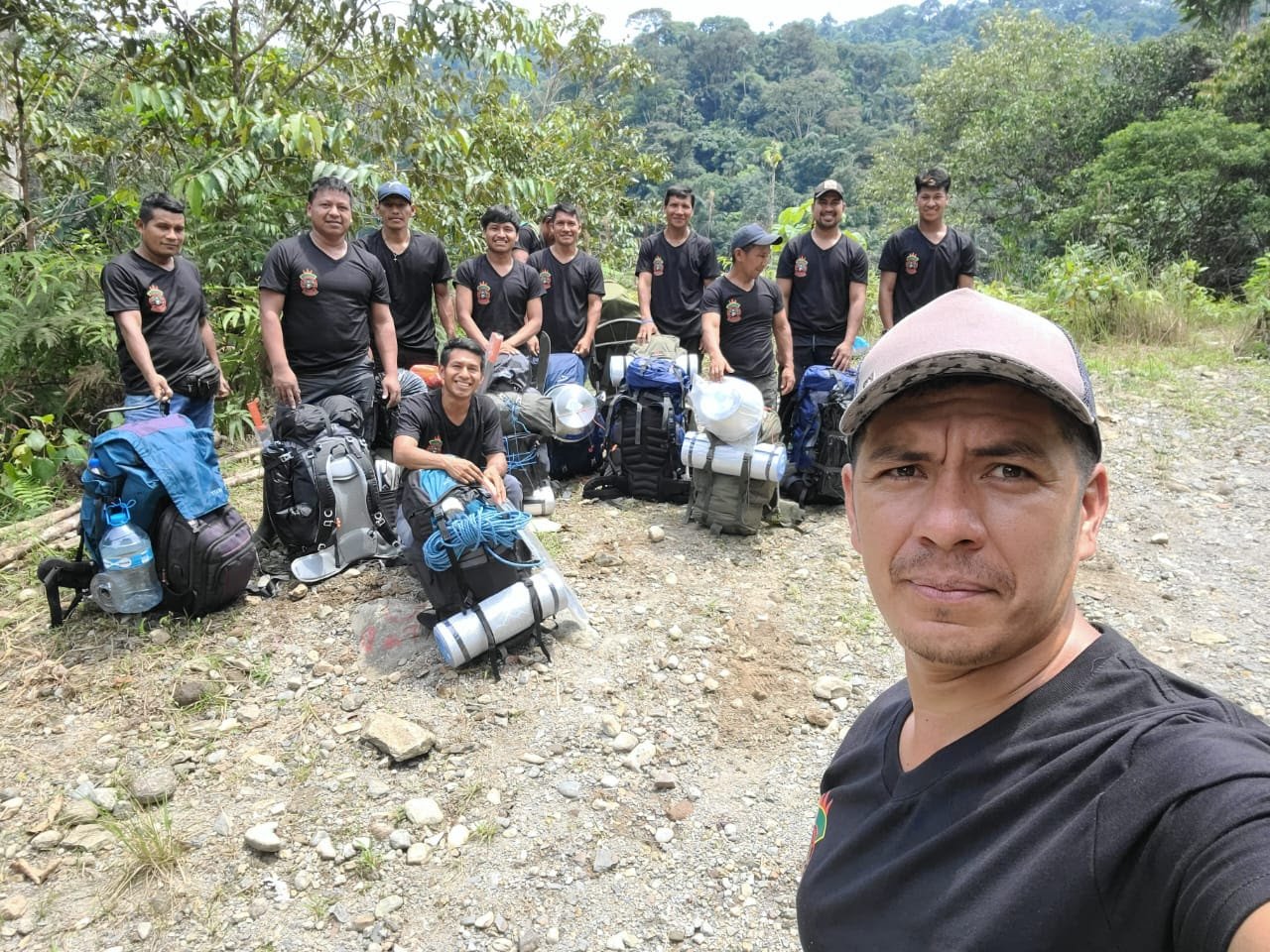This is from the voice memos sent to board member Serena Himmelfarb about the Park Guards trip.
Summary:
March 4th - 18th 2024, a team of Cofan Park Guards went into the Rio Cofanes/Chispa area to work on reestablishing Cofan presence in this important Cofan territory (head waters of the Aguarico River) that is over 30,000 hectares. Some activities accomplished on this trip were reestablishing presence, cleaning an old Cofan settlement called Chispa, clearing boundary trails and notifying intruders (miners, hunters, land squatters) that this area is Cofan territory that is under conservation.
There was clear presence of and engagement with illegal camps, squatters, and reports of someone selling protected land under fake titles.
Most of the boundary trails for this territory have not been opened up yet and with the increasing pressure from mining and land squatters it's important to finish opening the boundary trails. The guards cleaned about 20% of the total boundary trail and are hoping to return in the next upcoming months to continue to work in this territory if they can get the funds together.
----------
3/27/24
At the start of this month, a team of Park Guards embarked on a mission to the Rio Cofanes Territory for the first time in 6 years, for a 14 day mission to reestablish presence in the area, secure and clear the boundary trails, and determine the presence of illegal activities in the area such as gold, mining and land grabbing.
Older, experienced park guards were alongside new park guards on their first mission. All five Cofán communities were represented (Zabalo, Dureno, Chandia Nae, Duvuno and Sinagoe).
Rio Cofanes, is a Cofan ancestral territory that FSC played a key role in securing under a land title in 2008 covering about 30K hectares, around 70k acres. At that time, there was no Cofán community there but with this title, there was a plan to form the community of Chispa.
To accomplish that and to conserve the land, the Cofan nation decided to put the whole territory into the Ecuadorian Governments Socio Bosque program. Because this territory was gained under ancestral rights, it was to be managed by the Cofán Federation, based in Lago Agrio. The money from the Socio Bosque program was about 74k annually that was to go to caring for that territory, including the park guard program, and sustaining the community of Chispa.
But through self-interest, bad management and corruption, that money disappeared. Because that money was misspent and there was no way to show the Socio Bosque program administrators that the money was used responsibly, there was no more funding. So the whole project fell through, and there was no money for the guards or other programs. The people who had begun living in the territory to start the new community, Chispa, were unable to stay where they were because there was no more support.
Another problem that emerged from the management of this territory through the Cofan Federation was that conflicts with miners wanting access to the territory were sometimes handled under the table, which disincentivized community members to live in Chispa because they no longer had a say in what was done with resources, or who could come in to the area.
There is still one family in the area maintaining a CFS property which serves as a base before hiking to Chispa, a 4-5 hour trek. That family accompanied the park guards on this trip.
On this trip, they got to the base around noon to hike to the Chispa community. They arrived in the old community around 5 PM and found everything was overgrown with forest (Serena: Ask Felipe for photos). So the first few days were spent cleaning the house area.
There was a squatter there, an elderly illegal gold miner, an older person told the guards he couldn’t get a job in the city; he wasn’t taking much - a gram or two in a week. But in the next few days of cleaning up, they ran into other miners, one with a full camp and one with a dredge. The Park Guards talked with them and let them know it’s private property and they aren’t supposed to be there. The minute the guards leave, they expect miners will be back.
Gold miners working on their own or in small groups is that they can be more dangerous to confront, because they are working for their own profit and are often armed, as opposed to other resources where the workers are hired by someone who stays back in the city.
The Park Guards have to gauge every interaction carefully and have a range of tactics for approaching any given situation.
After cleaning for a few days, they began cleaning up the actual boundary trail. The boundary of the territory is on the cliff sides, so they could not make the trail on the actual GPS line, but rather a little further back along the ridge, where they can monitor the territory.
In all, they spent twelve days on that boundary work. They would spend each day clearing trail, come back to sleep at camp, then the next day pack up and move the campsite to where they finished cutting trail the previous day, and continue clearing trail the rest of the day, pressing forward.
The goal for this trip was to make it to the Sofia ridge, which goes all the way to Chalares (Ask Felipe for Map), but they needed one more week of work to get there.
The Cofan Park guards came out of the Rio Cofanes Chispa area on March 18th. The next day they drove up the Sofia area to talk to local contacts and start planning their entry in August that they hope to start from a different point. They hope to return before then, in April, to finish the last leg of boundary clearing, the trail from Chispa to the Sophia ridge.
Other reports that came out of the trip were that there had been an illegal land grabber selling plots of the territory, along the trail and road, made fake land titles, and was trying to sell them off, but someone from the their team had an accident on one of the cliffs bring the operation to a halt for now. But it was obvious that there is high interest in the area for resources the area has to offer, pointing to a need for the guard program.
Gold mining reports and sightings were heavily present, a few highly illegal ones, actually working on gold veins, using chemicals like cyanide to extract, which pollutes the nearby community of Sophia, and the headwaters of the Rio Cofanes, which pollutes the Agua Rico River that runs into the Amazon River.







